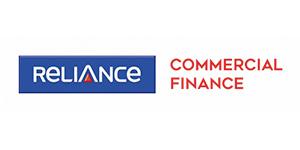Using the power of data to better finance SMEs
Reliance Commercial Finance deploys a powerful, integrated data infrastructure for managing data and risks
In the wake of fluctuations in rates, underwriting models, rules and compliances, banks need to manage not only the credit risk in their credit portfolio but also risks hiding in an individual credit or transaction. Reliance Commercial Finance for the past 8 years has been engaged in offering customized and convenient financial solutions to enable Small and Medium Enterprises (SMEs). Their aim is to help such enterprises, realize their true potential and become self-reliant entities.
Reliance Commercial Finance turned to SAS to automate processes and make compliant, calculated and sound business decisions. Their focus areas were smarter datacollection, processing and storage of data, intelligent analytics, comprehensive risk management and better collaboration across the concerned departments.
Automated data and risks overview:
Reliance Commercial Finance replaced the manual risk reporting process by integrating the existing risk models and data hierarchies into a streamlined, unified data infrastructure that measures and reports credit, counterparty, market and liquidity risk. SAS Enterprise Guide’s (EG) point and click approach was used for importing data, editing and creating new variables, recoding them, transposing and joining data sets. Thereafter this data is used for adhoc analysis and reports. Further the Data Collection department in the institution is heavily dependent on SAS EG Models for Predictive Analysis, New Risk Analysis, Capacity Allocation, 90 days delinquency forecast.
Master data management for each customer:
Reliance Commercial Finance had their data existing in independent silos thus not generating complete information. Master data management through DataFlux from SAS enabled them to consolidate all the information related to a customer, across various accounts and facilities into a single record by assigning each customer a unique Golden ID. This ID instantly flashes important data through which a scorecard report is generated foreach borrower. These scorecards have become an extremely important toolfor faster and effective credit and risk decision making across variousverticals in the firm.
A convenient, single version of clean and quality data:
SAS combines data integration, data quality and master data management intoa single, unified framework to ensure the consistency, accuracy and timeliness of data. The entire data management process – from data
collection and aggregation to data validation and cleansing is now automated. Senior executives at Reliance Commercial Finance now have the capability to monitor business KPIs in a visual manner on an on-going basis and are able to conduct data analysis all by themselves, eliminating the need to hire experts.
Slow, traditional reporting tools now replaced with Intelligent Analytics:
Complexcalculations are now implemented in a simple, easy to understand, drag and drop facility with SAS EG. Interactive visualizations and canned dashboards are created using SAS Visual Analytics, providing a definite edge over the traditional reporting tools. Additionally, the reliability and speed of the decision making process has improved greatly by using SAS EG as a tool for data crunching instead of relying on Excel spreadsheets.
Mapping credit and operational risks with a dashboard of important indicators:
Using the Return on Equity dashboard created with SAS, executives are now empowered with insights into credit risk and can visualize risk indicators at a glance with an added capability to drill down to the minutest level, thus enabling them to address their diverse needs. The revolving credit facility is based on the ROE framework and is used to identify important operational drivers and set the last mile KPI targets. Key Finance reports that give a clear picture of various indicators and performance measures like of COF, OPEX, GNPA, PAT, Interest Income, Non-Interest Income, ROE, NIM, ANR at Branch level, Zonal level and at an Organizational level, both at the product and sub-product level are now being easily generated by the Department Heads.
Ability to make well informed credit decisions and design effective customer retention schemes:
With SAS, executives can now perform application and behaviour scoring for virtually all consumer lending products and schemes. Further they were also able to assess and control risks within existing consumer portfolios and could improve customer acquisition strategies using advanced predictive analytics to gain a better understanding of the specific risk characteristics and subsequent attributes that lead to delinquency, default and bad debt.

Challenge
- Lack of central repository of data.
- Automating Portfolio Risk Review for Vehicles business.
- Identifying customers uniquely across all product portfolios by way of a unique ID.
- Evaluating customers basis their credit scores for product positioning.
- Enable Predictive Analysis to devise customer retention and delinquency management strategies.
Solution
SAS® Enterprise Business Intelligence
SAS® Data Quality & SAS® Data Integration
SAS® Visual Analytics
Benefits
- Time and cost involved in data preparation, analysis and reporting has reduced considerably.
- Reduced turnaround time and improved operational efficiency. Credit scores available easily and readily with an ability to make effective analysis.
- Better collaboration and accountability across data and credit facilities has improved customer service immensely.